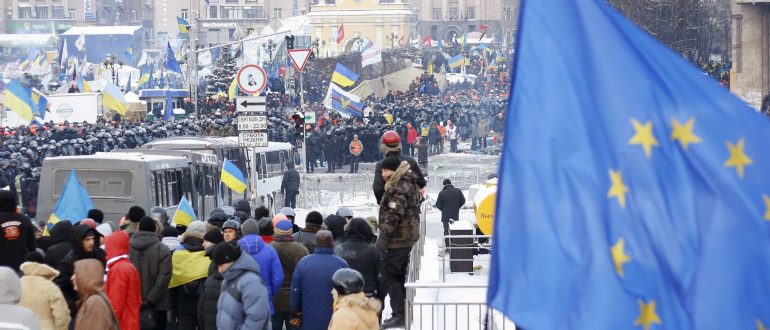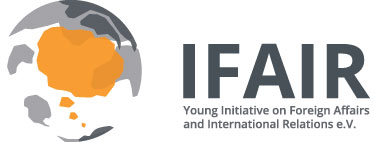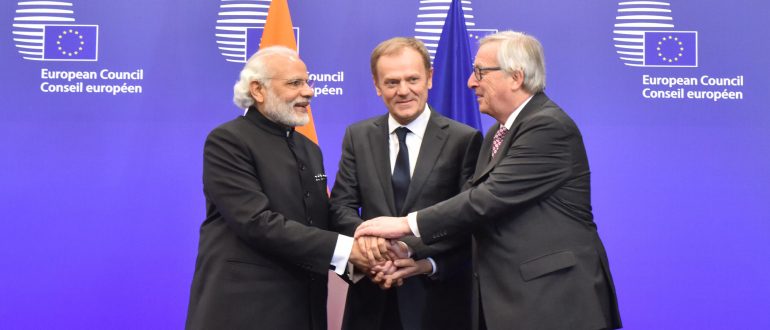
Does the Conflict with Russia over Ukraine have the Potential to Revive CSDP?
Although the changing security environment in Europe has mandated a potent CSDP for two decades, progress has been limited. The Ukraine crisis constitutes a potential catalyst for an effective CSDP that manages to coordinate scarce resources in European defence budgets and to streamline the European arms industry. Moreover, the CSDP has the potential to reinvigorate the European project as a whole.
1. The CSDP has Lost Momentum Despite an Overwhelming Case for It
The case for an increased European role within the area of defence cooperation has been compelling ever since the Common Security and Defence Policy’s (CSDP) inception at the turn of the century. At first, it was an effort to reshape the transatlantic relationship from a state of European dependency and outsourcing of responsibility to the US to a more balanced partnership (Howorth, 2007). This has become more urgent in recent years as the US is concentrating on the strategic challenges in East Asia. As a result, US protection has increasingly become only a last resort for European security, not the first port of call. Territorial defence for EU member states is still realized either on a national basis or through collective defence within NATO, whereas the CSDP remains essentially a cooperation framework for joint foreign missions and the improvement of military capabilities. Nonetheless, the US today welcomes pretty much any European contribution to its own defences and global security, regardless of the institutional arrangements chosen (Biscop, 2015).
Thus, EU member states need to invest in credible military capabilities. Yet, in an age of austerity and a volatile economic situation, the additional funds available are at best limited. Hence, more efficient spending through coordination and cooperation at the European level has been mandated for many years in order to reduce the enormous waste of resources through national duplication.
Yet overcoming ingrained interests and habits within the national armed forces and the arms industry establishment has turned out to be a stumbling block in a policy area, into which most leaders were not willing to invest serious political capital. As a result, the momentum created around the turn of the millennium in CSDP has waned considerably. Cooperation remains nonetheless sporadic and mostly does not provide the efficiencies which would be possible through proper coordination at the European level within the CSDP framework (Solana, 2015, p.2). If the current trend is to be reverted, a real game changer is needed..
2. Ukraine – A Possible Game Changer and Catalyst
Russia has pursued territorial annexation and military interventions in Ukraine, frequently violated EU member states’ air spaces and has repeatedly threatened nuclear bombardment of EU capitals in case a missile shield should be installed (Milne, 2015). Such a denunciation of the post-Cold War European security architecture constitutes a game changer with potentially similar strategic repercussion as 9/11 turned out to have a decade earlier.
At first, the evolving conflict over Ukraine caught the EU completely off guard, however (Haukkala, 2015). After an initial paralysis following the invasion and annexation of Crimea, the Union’s Common Foreign and Security Policy (CFSP) reawakened with resolve following the unfolding fighting in the Donbas region and the death of 213 EU citizens when a commercial airplane was shot down. The EU imposed political and economic sanctions on Russia, and member states were actively engaged in diplomatic efforts to resolve the crisis. Yet the security aspect of the CFSP, the Common Security and Defence Policy (CSDP) – in particular the option of launching civilian and military missions abroad – was conspicuous by its absence. Ukrainian calls for an EU police mission in the Donbas were not even seriously considered (Ukrainian EU Mission, 2015). In contrast, Russia’s challenge to the European security order caused NATO quickly to resume its original role of territorial defence. As NATO was winding down two decades of out-of-area engagement, the Wales summit in September 2014 drew up new defence plans for its hitherto virtually demilitarised Eastern members. President Obama emphatically reassured the Estonians in September 2014 that every member state could count on NATO’s collective defence guarantee (Obama, 2014).
At first sight, it looks like NATO once again made the race and CSDP is drawing the shorter straw. Although territorial defence is indeed the prerogative of NATO, I argue that enhanced capabilities realized within the CSDP framework would nonetheless contribute towards territorial defence. Thus, CSDP should be a logical part of the ‘Western’ reply to the Ukrainian conflict. There is a significant overlap in the type of swiftly deployable resources needed for CSDP missions and those mentioned in the NATO Readiness Action Plan to counter any possible Russian threats against NATO’s (and the EU’s) Eastern members (NATO, 2014a, point 5).
Furthermore, the Ukrainian crisis has on balance reinforced rather than altered the long-term trend in Washington of focusing on Asia and urging the Europeans to take on a larger role on their home turf (Meyer, 2011, p. 683). On the diplomatic front, the Obama administration has already largely conceded negotiations with Russia on the Ukrainian case to the Europeans. Former US Defence Secretary Robert Gates (2011) warned that US protection was ultimately linked to adequate contributions by the Europeans. European military capabilities and a political willingness to use them are hence crucial not only for the role as security provider in the wider region, but also for their own territorial defence. The staunchly pro-US Eastern EU and NATO members have taken this message on board. In the wake of the Ukraine crisis, Estonia and Poland have for instance made quick progress towards the 2% defence target (Bender, 2015). At the same time, the air defence of the Baltic states is effectively outsourced to other European NATO members (NATO, 2014b). This sends a powerful message of transatlantic solidarity without freeriding and could pave the way for a new and less dogmatic understanding of CSDP, especially as most EU members are in NATO as well.
3. The Case for a Renewed Effort for CSDP
NATO members committed themselves at the Wales summit in 2014, once again, to spend 2% of GDP on defence. This goal is supposed to be achieved by 2024 and would represent a substantial increase in the amount that most EU members (EDA, 2013) currently spend on their armed forces. For some member states it would constitute a doubling of expenditure. The level of spending would thus again be on the levels in the second half of the 1990’s. However, this level did not enable the Europeans back then to intervene effectively on their own in the Balkans, a major reason for the very establishment of CSDP (Bickerton, 2011, p. 8). Moreover, anything short of massive increase in national defence budgets would probably still fail to offset the increasing costs of sophisticated modern arms, especially the so-called strategic enablers (Solana, 2015, p. 12). Yet to raise taxes and debts or cut social expenditure substantially seems under the current circumstances politically more difficult than to overcome resistance to change within the defence sector. Hence, a real commitment to make EU member states’ armed forces more capable by coordinating scarce resources more efficiently is the only option available (Biscop, 2013, p. 1126).
A serious commitment to a coordinating role of European Defence Agency (EDA) in procurement matters paired with the political go ahead for the necessary cross-national consolidation and specialisation of the European defence industrial complex would be more promising in order to be taken seriously by Russia. As only six member states have a sizeable arms industry (Balis and Heidenkamp, 2014, p. 1), it should be a manageable task to reorganize it without putting any of these countries at a severe disadvantage. The result will be more adequate equipment for the forces at a better price. The ongoing efforts by the European Commission to beef up the low research and development (R&D) share in European defence expenditure by encouraging dual-use projects will add to that. “A New Deal for European Defence” proposed that civilian research funds could also benefit defence R&D (EU Commission, 2013). The same applies for the proposed internal market for armaments, which would speed up further cross-country consolidation and specialisation to enable the companies to stay at the cutting edge of technological developments (Balis and Heidenkamp, 2014, pp. 2-5).
4. CSDP and Its Potential to Revive the Entire European Project
A renewed effort at seriously implementing CSDP, the EU’s “weakest link” (Solana, 2015, p.1), has the potential to revive the European project as a whole (Bickerton, 2011, p. 2). Public support for the European project has suffered greatly in the wake of the financial and debt crisis (Eurobarometer, 2014). The success of Eurosceptic parties at the elections to the European parliament in 2014 serves as a case in point (European Parliament, 2014). Furthermore, the economic hardship in countries like Greece is about to undermine a common stand in the EU on sanctions on Russia and hence CFSP itself. The controversies concerning the planned sale of French helicopter carriers to Russia also demonstrate the danger an unconsolidated arms industry dependent on exports poses to CFSP. Yet polls also indicate that increased military cooperation still has a rather high support throughout the EU. This potential ought to be used and success in the field could help to recreate a sense of purpose of the European project in the eyes of Europe’s citizens.
Bibliography
- Balis, Christina and Hendrik Heidenkamp (2014), ‘Prospects for the European Defence Industrial Base’, London, Royal United Services Institute, https://www.rusi.org/go.php?structureID=occasionalpapers&ref=O540ED4386FC5F.
- Bender, Jeremy (2015), ‘Only the US and Estonia are meeting NATO’s defence budget goals’, Business Insider UK, http://uk.businessinsider.com/only-us-and-estonia-meeting-nato-budget-goal-2015-2.
- Bickerton, Chris; Menon, Anand and Irondelle, Bastien (2011), ‘Introduction’, Special Issue on ESDP, Journal of Common Market Studies, January 2011, 49:1.
- Biscop, Sven (2013), ‘Peace without money, war without Americans: challenges for European strategy’, International Affairs, issue: September 2013.
- Biscop, Sven (2015), ‘Strategy – what is it good for?’, European Geostrategy, http://www.europeangeostrategy.org/2015/04/strategy-what-is-it-good-for/.
- Eurobarometer (2014), ‘Standard Eurobarometer 82 – Autumn 2014: Public Opinion in the European Union – First Results’, European Commission, Brussels, http://ec.europa.eu/public_opinion/archives/eb/eb82/eb82_first_en.pdf.
- European Commission (2014), ‘A New Deal for European Defence: Commission proposes industrial action plan’, http://europa.eu/rapid/press-release_IP-14-718_en.htm.
- European Defence Agency (EDA) (2013), ‘Defence Data 2012’, Brussels, European Defence Agency, http://www.eda.europa.eu/docs/default-source/eda-publications/defence-data-booklet-2012-web.
- European Parliament (2014), ‘Results of the 2014 European elections’, http://www.europarl.europa.eu/elections2014-results/en/election-results-2014.html.
- Gates, Robert (2011), ‘The Security Defense Agenda (Future of NATO)’, U.S. Department of Defense, Washington, http://www.defense.gov/speeches/speech.aspx?speechid=1581.
- Haukkala, Hiski (2015), ‘From cooperative to Contested Europe? The Conflict in Ukraine as a Culmination of a Long-Term Crisis in EU-Russia Relations’, Journal of Contemporary European Studies, 23:1.
- Howorth, Jolyon (2007), Security and Defence Policy in the European Union, Palgrave Macmillan, Basingstoke.
- Meyer, Christoph (2011), ‘The Purpose and Pitfalls of Constructivist Forecasting: Implications of Strategic Culture Research for the European Union’s Evolution as a Military Power’, International Studies Quarterly, Vol. 55, No 3, pp. 1-22.
- Milne, Richard (2015), ‘Russia delivers nuclear warning to Denmark’, Financial Times, http://www.ft.com/cms/s/0/646064c8-d07a-11e4-a840-00144feab7de.html#axzz3YFLzaERE.
- Mission of Ukraine to the European Union (Ukrainian EU mission) (2015), ‘Kostiantyn Yelisieiev: The EU Operation is the Best Option for Settlement in the Donbas’, http://ukraine-eu.mfa.gov.ua/en/press-center/news/34712-jelisejev-operacija-jesoptimalynij-variant-vregulyuvannya-na-donbasi.
- NATO (2014a), ‘Wales Summit Declaration’, http://www.nato.int/cps/en/natohq/official_texts_112964.htm.
- NATO (2014b), ‘Allies enhance NATO air-policing duties in Baltic States, Poland, Romania’, http://www.nato.int/cps/en/natohq/news_109354.htm?selectedLocale=en.
- Obama, Barack (2014), ‘Remarks by President Obama to the People of Estonia’, The White House, Washington, https://www.whitehouse.gov/the-press-office/2014/09/03/remarks-president-obama-people-estonia.
- Solana, Javierv (2015), ‘More Union in European Defence’, CEPS, Brussels, http://www.ceps.eu/publications/more-union-european-defence.



